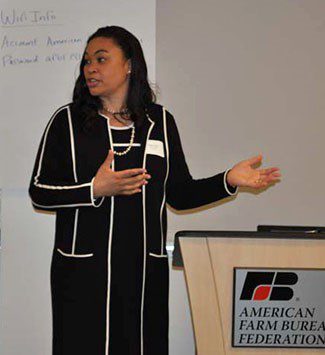The Federal Aviation Administration‘s Joshua Gustin and Felisa White are members of a government team project recognized as a Pinnacle Awards finalist in the Government TEAM Project of the Year category. Gustin serves as manager of communications, information and network programs, and White is manager of program management and integration. Here, they share what they are most proud of in terms of the project’s achievements, what they learned from the project, the biggest struggle associated with the project and how they overcame it and more.
What’s one key thing you learned from this project?

White: SWIFT (SWIM Industry-FAA Team) is an open forum that includes various skillsets from operations, IT, research analysts, business managers, etc., promoting open dialogue geared towards problem identification and identifying the “right data” to address the issue. Therefore, identifying and communicating the problem is key. Oftentimes, we go straight to the solution and work backward, when in fact that may not be the best or “right” solution to mitigate the problem. This also speaks to the importance of having the “right people, in the right place, at the right time.”
Looking back at this project and achievement, what are you most proud of?

Gustin: The most powerful tool in the world is access to information. With the amount of data available in the world, and especially the technical data from the FAA, I have always felt there was a void in understanding and applying these data elements to address our airspace operational individual needs.
I’m proud to have established the forum that fills this void for FAA data, particularly in such a collaborative and open environment that enables industry and government to work together, transparently.
What are one or two collaboration and team working traits you find necessary to complete such a project in government?
White: The key trait that I have found necessary is the ability to be open and willing to share information. This is a very competitive environment. Initially, there was a hesitation amongst the attendees to openly share for fear of divulging information that would allow too much visibility into their business models. We were challenged with creating an environment that looked across the National Airspace System to identify common themes in the operational environment that could be solved utilizing System Wide Information Management data.
However, this venue created a safe place where we could all roll up our sleeves and tackle various issues. Our charge was to educate the aviation community about the vast amount of data they were consuming. Once they realized the value and the potential of the SWIFT, they bought in. The fact that our attendance is consistently above 100-plus attendees with over 50% that have been with us from day one is evidence of this!
What was your biggest struggle associated with this project, and how did you overcome it?
Gustin: In developing such a topically broad venue, it is difficult to figure out how to constrain attendance. We want attendance from varying parts of the aviation industry, which makes for the most productive and educational discussions. Part of the success has been the inclusion of people from aviation operations, IT, and data scientists.
Airlines in particular have invested their time in this discussion, and often send more than six people to various sessions. Beyond that, we get people from industry, research, and educational organizations who are also trying to figure out how to apply this data to their environments. The success of our growth has caused the problem — finding a big enough room! We hope to continue to have this problem and find ways to deal with it.
What’s your best advice for aspiring govies who want to follow in your footsteps?
Gustin: Establishing a vision and gaining buy-in, both internally and externally is critical. This requires takes a solid understanding of the heart of the problem, getting to the heart of that problem, and an ability to communicate why the solution solves that problem. Communicating all of that in a way those stakeholders understand and can see themselves achieving is key. Then, creating the momentum and sustaining such a project takes leadership and solid execution.
Having the right team around you to do each of these steps is critical to the success of any new and innovative project.


1 Comment
Joshua,
I am so proud of your accomplishment and wish the very best as you move forward.
Ken Robinson